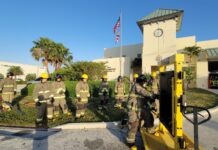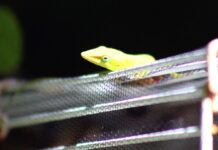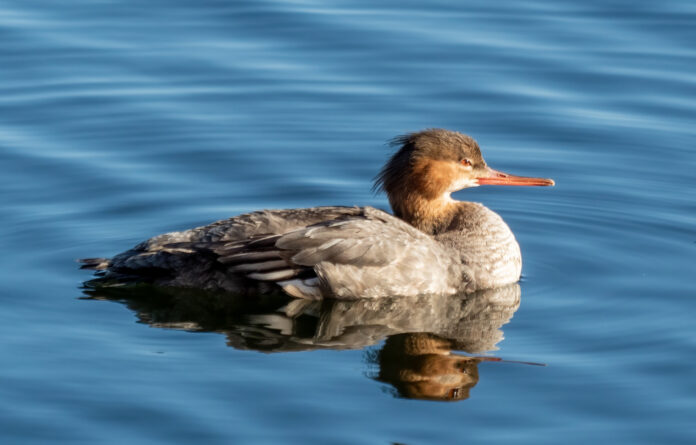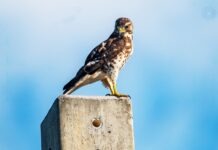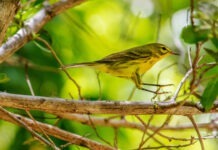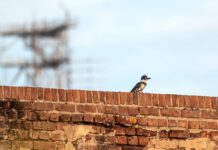My friend Clark called me a little while back and I missed it. When I returned the call half an hour later, he said, “Never mind. I don’t need you. I was trying to figure out what this duck-like bird was on my lake, but I figured it out without you.”
“It was a merganser,” I said.
“How the (heck) did you know that?” he asked, exasperation in his voice. Which made me happy. There’s nothing better than acting like a know-it-all jerk to someone you’ve been friends with since you were 14.
Figuring it out wasn’t that Sherlockian. Clark lives on a freshwater lake in South Jersey. Mergansers are weird-looking ducks that have these long, narrow bills, with little hooks on the end. So people tend to reject the idea that they are ducks and often refer to them as duck-like, even though they are actually ducks. I was playing the odds of what might land on a freshwater lake in South Jersey in late winter, and they were in my favor.
“It was a hooded merganser,” he said. Which actually got me a little jealous, as I’ve only seen them a handful of times, and only once in the Keys. The males have these cool, round, black and white crests on the back of their head that make them seem about three times bigger than they are, and look kind of like a warped yin and yang symbol, or an alien from low budget 1970s sci-fi movie, or the headdress worn by a chorus girl in a long-forgotten Busby Berkley number.
There are three species of mergansers in North America. Besides hooded, we also get common and red-breasted mergansers. We regularly get the red-breasted ones in the Keys, at least in the winter.
Red-breasted mergansers also have crests on their heads, just not as otherworldly as the hooded’s. In most field guides the red-breasteds’ crests look well-organized and controlled, like a greaser’s coif from the ’50s. But in most photos I’ve seen the crests look more chaotic and spikey, like the hair of an aging punker trying to pretend he’s still got it.
The red-breasted part of their name seems a bit of a stretch. There’s a slight hue of ruddiness there, but it’s more pinkish brown or dark peach, and only on the breast of the males during breeding season. But the questionable accuracy of the name is more than made up for by breeding males’ silky, Baltic-green head, lava red eye, and finely barred black-and-white feathers on their flanks. The male red-breasted merganser is a dead sexy duck.
We never see them when they look like that here, though, as red-breasted mergansers breed in the cold water places – along the edges of lakes and rivers, estuaries and coastal bays in the boreal forests and tundra of the continent. (They also breed in the northerly parts of Northern Europe, Greenland and Iceland.)
When we see them in the Keys they are in non-breeding plumage, their bodies mostly gray and their head, while still crested and spiky, is more a peanut butter brown. In winter, the males and females, young and old, are largely indistinguishable.
You could be forgiven for not knowing a merganser was a duck by its name, which derives, as so many names do, from the Latin – the “merg” coming from “mergus,” which means diving, and the “anser” coming from “anser,” which means goose.
Some of the older, retired common names for the species were red-breasted goosander, sea robin, Long Island sheldrake and sawbill. It’s sawbill that I like the most out of the old names, because it is so descriptive of their defining part, their bill, which is long and serrated, allowing them to grab onto fish four to six inches long underwater, and not lose them.
While red-breasted mergansers are fairly common, there’s a lot that isn’t known about them, largely because they often breed in distant and hard-to-reach places. Most of the early research on them was trying to understand how much they affected the breeding success of certain types of valuable salmon. Population estimates for them are difficult because they often intermingle with common mergansers and it can be difficult to differentiate them in large flocks.
Between breeding season and migration the males molt, losing all of their feathers at once and essentially becoming flightless while they grow new ones – but no one knows where, exactly, they do this.
One of the intriguing things about them is their small array of feeding strategies. In the Keys, more often than not, you see them in the deeper salt ponds – maybe a foot or two deep – where they practice shallow diving, disappearing under the water for about 16 seconds, popping up for about eight seconds, then diving again. In the open water they tend to practice deep diving, submerging for about 48 seconds per dive, staying on the surface for about 24 seconds. In clear water sometimes they will do a thing called snorkeling, where they swim on the surface with their face in the water before diving for fish. They will also hunt, on occasion, communally, much the way white pelicans will, forming a line and pushing the fish from shallow water into even shallower water, making the fish much easier to catch.
I’ve seen red-breasted mergansers pretty consistently over the years. But lately I’ve been wondering if this incident with Clark has cursed me a bit, if being a smarty pants for the sake of being a smarty pants has affected my merganser-seeing karma. Because over the last several months I’ve gone out several times to places that have been reliable spots in the past and not seen them.
This is not because of some decline in their population. Mergansers are officially classified as a species of least concern, the opposite end of the population spectrum from endangered. And I’ve been seeing pictures of them posted from other Keys wildlife photographers all winter long. They’ve just evaded me and my lens.
I did finally see one a few weeks ago when, oddly enough, I was out on the boat with some other friends from high school. But it was on the far side of a sandbar, at least 200 yards away, not even worth lifting the camera for.
Maybe I’m paying for my sins. But this is the thing – if Clark calls me again any time soon, and the opportunity for some cheap one-upmanship presents itself, I will not hesitate. I will take the low road every time. The mergansers will be fine without me seeing them.




